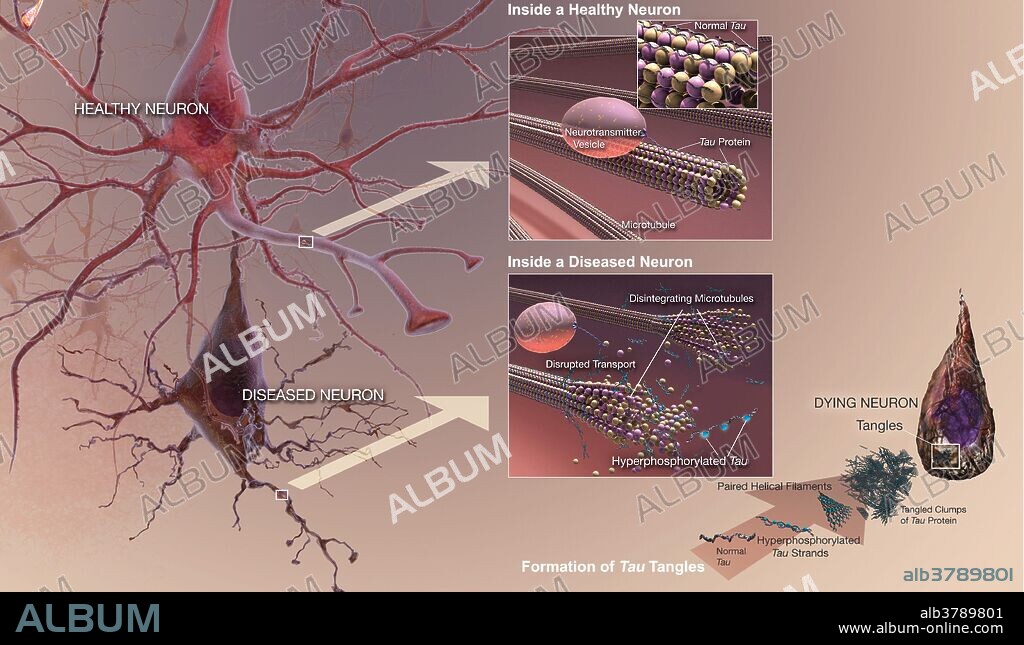alb3789801
Alzheimer's Disease, Neurofibrillary Tangles

|
Añadir a otro lightbox |
|
Añadir a otro lightbox |



¿Ya tienes cuenta? Iniciar sesión
¿No tienes cuenta? Regístrate
Compra esta imagen.
Selecciona el uso:

Título:
Alzheimer's Disease, Neurofibrillary Tangles
Descripción:
Ver traducción automática
Neurofibrillary Tangles (NFTs) are aggregates of hyperphosphorylated tau protein that are most commonly known as a primary marker of Alzheimer's disease. Alzheimer's disease (AD), also known as Alzheimer disease, or just Alzheimer's, accounts for 60% to 70% of cases of dementia. It is a chronic neurodegenerative disease that usually starts slowly and gets worse over time. The most common early symptom is difficulty in remembering recent events (short-term memory loss). As the disease advances, symptoms can include problems with language, disorientation (including easily getting lost), mood swings, loss of motivation, not managing self care, and behavioral issues. As a person's condition declines, they often withdraw from family and society. Gradually, bodily functions are lost, ultimately leading to death. Although the speed of progression can vary, the average life expectancy following diagnosis is three to nine years. About 70% of the risk is believed to be genetic with many genes usually involved.
Crédito:
Album / Science Source / National Institute on Aging/NIH
Autorizaciones:
Modelo: No - Propiedad: No
¿Preguntas relacionadas con los derechos?
¿Preguntas relacionadas con los derechos?
Tamaño imagen:
4928 x 2850 px | 40.2 MB
Tamaño impresión:
41.7 x 24.1 cm | 16.4 x 9.5 in (300 dpi)
Palabras clave:
ALZHEIMER • ARTE CONCEPTUAL • ARTE • CIENCIA • CONCEPTO • DAÑADAS • DAÑADO • DESORDEN • DIBUJO • ENFERMEDAD • GRAFICO • ILUSTRACION • INFOGRAFÍA • INFORMÁTICA GRÁFICA • INSALUBRE • NEUROLOGIA • NEUROLÓGICOS • NEURONA • OBRA DE ARTE • SALUDABLE • SIGLO XXI • TAU
 Pinterest
Pinterest Twitter
Twitter Facebook
Facebook Copiar enlace
Copiar enlace Email
Email
